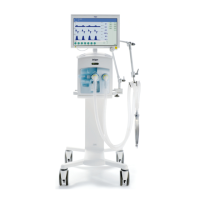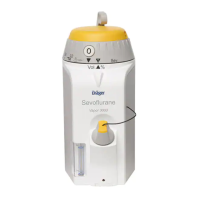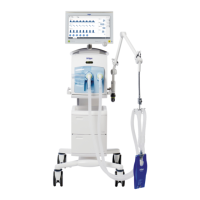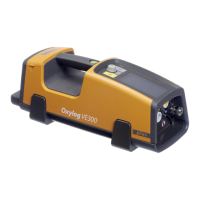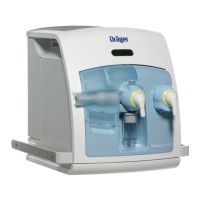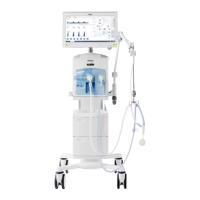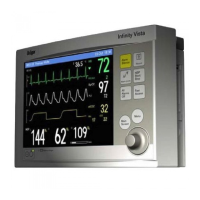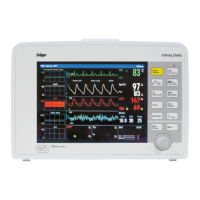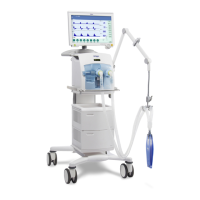
Do you have a question about the Dräger V500 and is the answer not in the manual?
| PEEP | 0 to 50 cmH2O |
|---|---|
| Type | Ventilator |
| Modes of Ventilation | Volume Control, Pressure Control, SIMV, CPAP |
| Display | Touchscreen |
| Patient Range | Neonatal, Pediatric, Adult |
| Connectivity | RS-232, Ethernet, USB |
| Power Supply | 100 to 240 VAC, 50/60 Hz |
| FiO2 | 21% to 100% |
| Trigger Sensitivity | Adjustable |
| Alarms | Apnea, Disconnection |
| Inspiratory Time | 0.01 to 10 s |
Lists learning goals for NICU nurses on Dräger V500 ventilator use and features.
Identifies key physical parts of the Dräger V500 ventilator, including the monitor and limbs.
Describes the flow sensor and the FiO2 analyzer component of the ventilator.
Details the main elements and layout of the Dräger V500 ventilator's screen interface.
Explains settings and measurements for the Pressure Control-Assist Control ventilation mode.
Details settings and measurements for the Pressure Control-Synchronized Intermittent Mandatory Ventilation mode.
Covers settings and measurements for the Volume Guarantee-Assist Control ventilation mode.
Outlines settings and measurements for the Volume Guarantee-SIMV ventilation mode.
Describes settings and interfaces for the Nasal Continuous Positive Airway Pressure mode.
Explains settings and interfaces for the Nasal Intermittent Mandatory Ventilation mode.
Displays the interface for High-Frequency Jet Ventilation (HFJV).
Details the medium priority High Tidal Volume alarm, indicating VT above limit.
Explains the high priority Circuit Disconnect alarm, indicating MV low.
Describes the Pressure Limit alarm, noting VT not reached due to pressure limitation.
Covers the Airway Obstruction alarm, indicating potential airway issues.
Compares O2 function, Set PIP calculation, and Manual Breath functionality between Avea and Dräger.
Defines pressure ventilation and volume guarantee, explaining their core principles.
Discusses factors that increase or decrease compliance and resistance and their impact.
Explains why consistent minute ventilation is crucial for patient stability and outcomes.
Provides contact details for Ryan Sura and Alicia Rummel for further questions.
